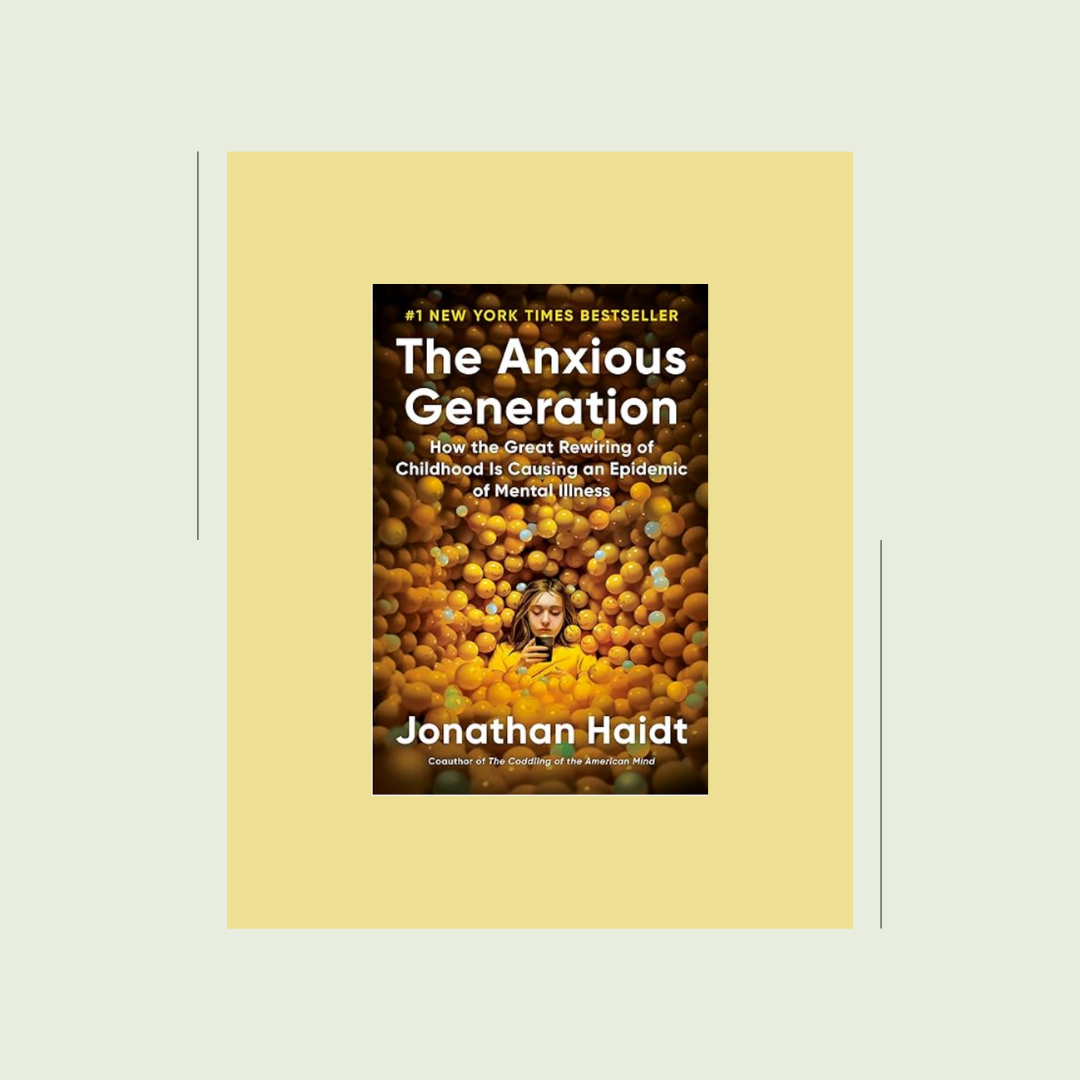Side note: As an Amazon Affiliate, I make money from qualifying purchases which may include some of the products linked below.
Last week, my brother sent me a text message. It was a screen clip of a book cover with the message, “I think you would like”. When I read the text, I laughed. I was holding that exact book in my hand. It was the book The Anxious Generation: How the Great Rewiring of Childhood is causing an Epidemic of Mental Illness by Jonathan Haidt. If you’re a parent of a child between the ages of 5 and 14, get a copy and read it today.
Why are young adults so anxious?
Are they really anxious or do they just feel more comfortable talking about anxiety?
What has triggered this anxiety?
These are the questions Jonathan Haidt examines in this book. Haidt has written several books that I thought were incredibly well-reasoned and insightful. So when I saw he was covering the topic of children, technology, and mental health, I knew it was a must-read.
He takes a thoughtful approach to first asking the question: do we actually have a mental health epidemic? If so, when did it start and what is the source? He then methodically removes any potential culprit until only one remains: the introduction of smartphones and social media to adolescents. Haidt provides a clear picture of how they differentially impact young men and women.
His primary thesis captures two contradictory aspects of modern parenting. We have overprotected kids in the physical world and under-protected them in the virtual world.
He brings both the diagnosis and the cure. His conclusion provides practical suggestions for parents, schools, and policymakers. The solutions are reasonable and practical. He’s not asking you to send your child into an isolated wilderness without the internet. He’s encouraging you to let them grow up a little and develop a stronger sense of identity during their most impressionable years.
Haidt never writes from an ivory tower. In fact, it almost felt like I was reading a letter from my Uncle Johnny pleading with me to do right by my kids. His research indicates what many of us who work with children have also concluded about smartphones. They have a time and place, but should wait until our kids are older. They are much more dangerous than they appear. We probably can’t and shouldn’t bypass smartphones altogether, but we’re passing them out long before kids have the internal infrastructure to manage their impact. And it’s doing damage.
As a school administrator, I see firsthand the unique challenges facing young people today. I’m often irritated at how difficult it is for thoughtful parents to protect their kids. I have had so many meetings with parents who wished they would have fully understood the impact of the apps on their child’s phone before it did damage. In an increasingly virtual world, it’s sometimes hard to figure out what is a threat and what is harmless. Modern parents have to put a lot more effort into understanding the different influences pulling at their children. As a parent, one of your most important jobs is to place healthy boundaries around your child. It’s harder today to understand how to do that. But you still have to be aware.
This book is a great place to start. Before you open Pandora’s box and give your child a smartphone and unrestricted access to the app store, I highly encourage you to read this book.






3 Comments on “Book Review: The Anxious Generation”